GCSE Biology - AQA
2.1.2 - Proteins
Jump to:
Proteins
Proteins are a group of biological molecules that play many important roles in living things.
They are very large biological molecules which are made by joining together many smaller molecules called amino acids.
Proteins are made by ribosomes. At a ribosome, hundreds or thousands of amino acids are joined together to form a long chain, which then folds up to form a protein.

At a ribosome, many amino acids join together into a chain. This chain of amino acids then folds into a protein. This diagram shows a relatively small number of amino acids, but there are actually hundreds or thousands of amino acids in most proteins.
Functions of proteins
Proteins carry out a huge variety of functions in living things. Almost every biological process uses proteins in some way. Some complex biological processes, like photosynthesis, require huge numbers of proteins all carrying out different functions.
Some examples of the functions of proteins are listed below. You do not need to memorise this list - it is just to give you an idea of how important proteins are to living things. Some of these types of proteins will be covered in more detail in other parts of the course.
Enzymes
Enzymes are a group of proteins that catalyse (speed up) chemical reactions. Most chemical reactions in living things would happen too slowly without enzymes to speed them up.
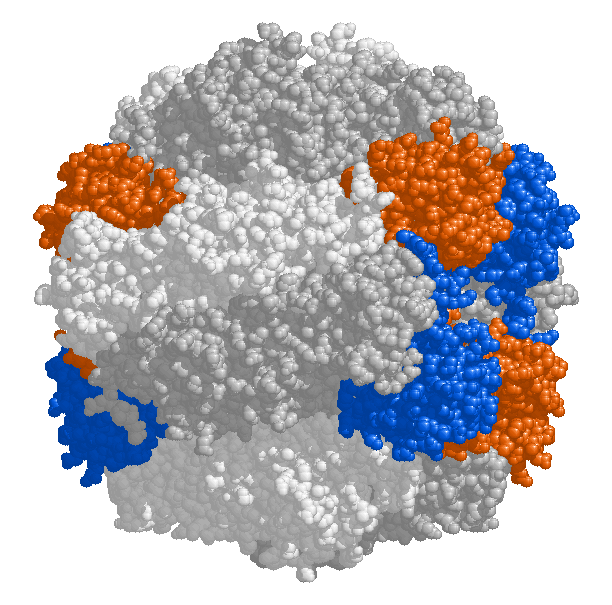
Computer generated image of an enzyme called rubisco, which plays an important role in photosynthesis.
Transport proteins
Transport proteins are proteins that move substances from one place to another. For example, there are transport proteins that help substances move across membranes.
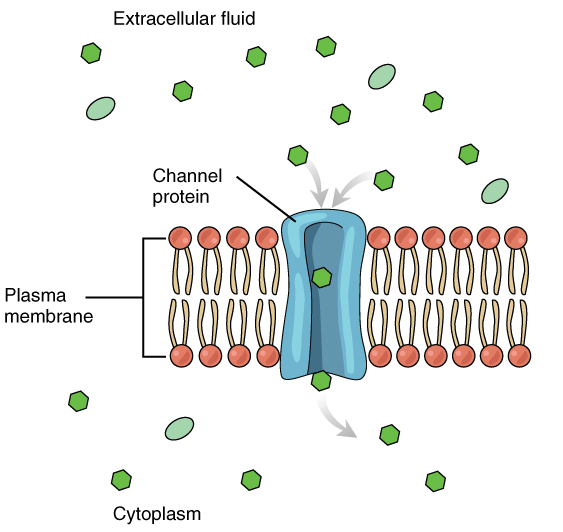
Diagram showing a channel protein - a type of transport protein which allows substances to diffuse across cell membranes. Image: 0306 Facilitated Diffusion Channel Protein.jpg by OpenStax on Wikimedia Commons (CC BY 3.0 - https://creativecommons.org/licenses/by/3.0/deed.en)
There are also transport proteins that carry substances longer distances. For example, haemoglobin is a protein that carries oxygen in the blood of many animals.
Structural proteins
There are many proteins that have structural roles. For example, all cells contain long fibres made of structural proteins. These fibres gives the cells shape and strength. There are also structural proteins that give strength to hair, nails, skin, scales and horns in animals.
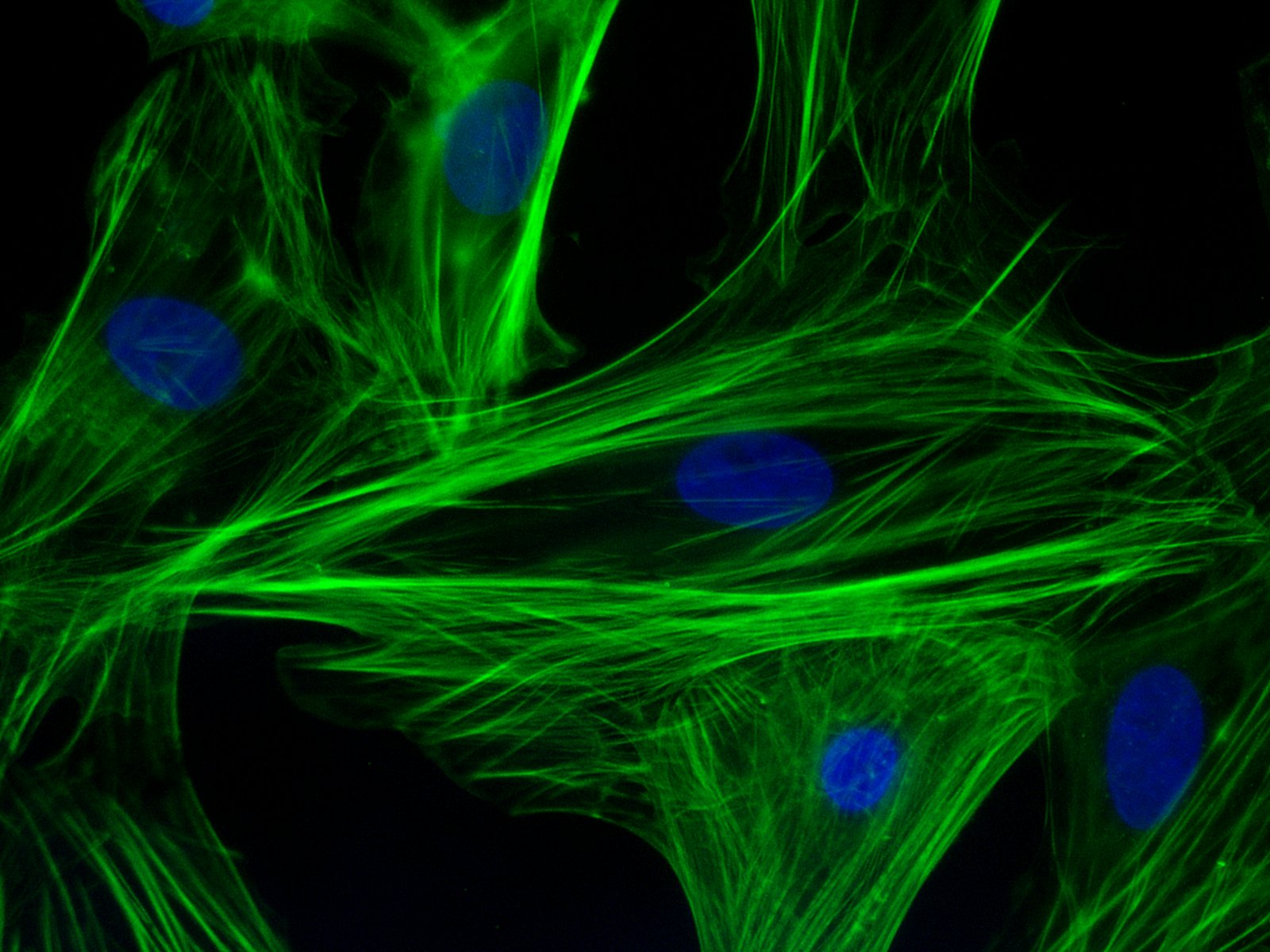
Heart muscle cells stained to show structural protein fibres in green and cell nuclei in blue. Image: F-actin filaments in cardiomyocytes.jpg by s1415 on Wikimedia Commons (CC BY-SA 4.0 - https://creativecommons.org/licenses/by-sa/4.0/deed.en)
Hormones
A hormone is a biological molecule that stimulates changes in an organism. Some hormones (such as insulin) are proteins.
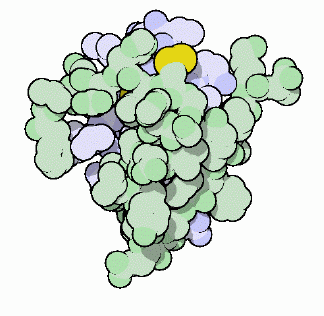
The structure of insulin. Image: 014-insulin-4ins.gif by David Goodsell on Wikimedia Commons (CC BY 3.0 - https://creativecommons.org/licenses/by/3.0/deed.en)
Antibodies
Antibodies are group of proteins that play important roles in the immune systems of animals.
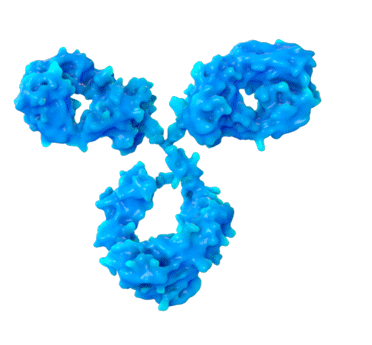
The structure of an antibody. Image: Hcp-0.0-CRYSVITA-antibody rotating 03.gif by CRYSVITA on Wikimedia Commons (CC BY-SA 4.0 - https://creativecommons.org/licenses/by-sa/4.0/deed.en)
Receptors
Receptors are structures in an organism that detect stimuli (such as light, sound or touch). Many receptors are proteins.
For example, all cells have receptor proteins in their cell membranes which allow them to detect other cells that they come into contact with (cell recognition).
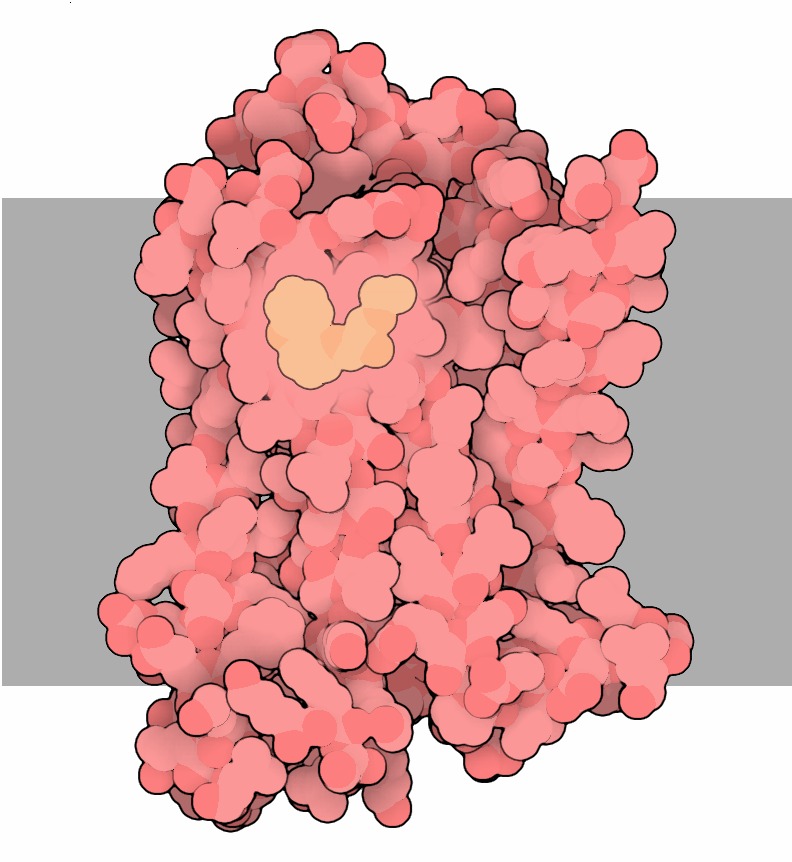
A receptor protein that detects the hormone adrenaline. The protein is shown in red. It is embedded in the cell membrane, which is shown as a grey strip. When a molecule of adrenaline - shown in orange - binds to the receptor protein, changes are triggered within the cell. Image: 100-AdrenergicReceptors-2rh1.tif by David Goodsell on Wikimedia Commons (CC BY 3.0 - https://creativecommons.org/licenses/by/3.0/deed.en)
Proteins that generate movement
There are some proteins that generate movement. Examples of movements that are generated by proteins include: muscle contraction, the contraction of cells during cell division, the movement of flagella and cilia, and the movement of substances within cells.
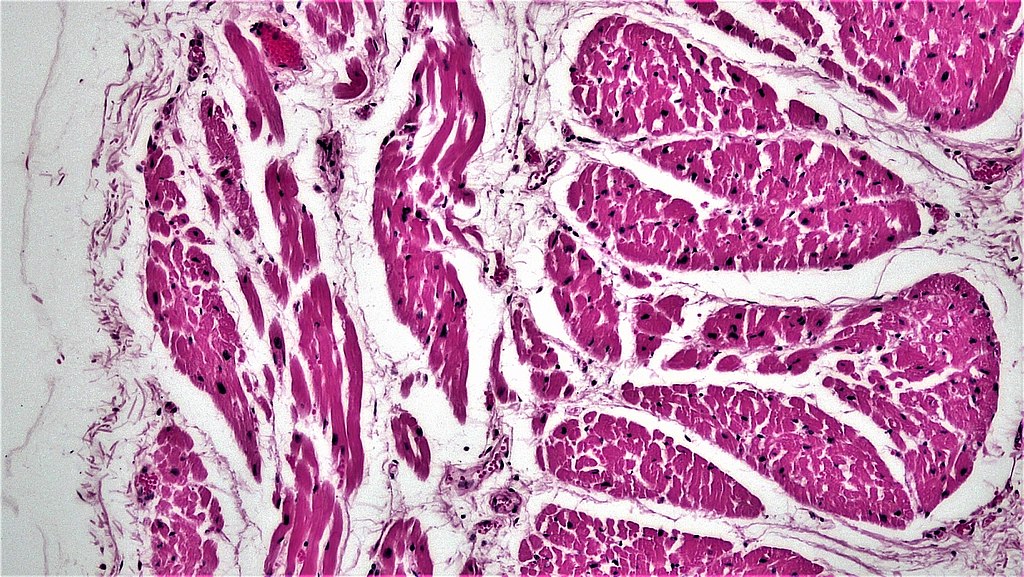
Muscle tissue contains large amounts of proteins that generate movement.
Storage proteins
Some proteins are used to store useful substances, such as iron or amino acids. The seeds of many plants contain large amounts of storage proteins which store useful substances for the developing plant.
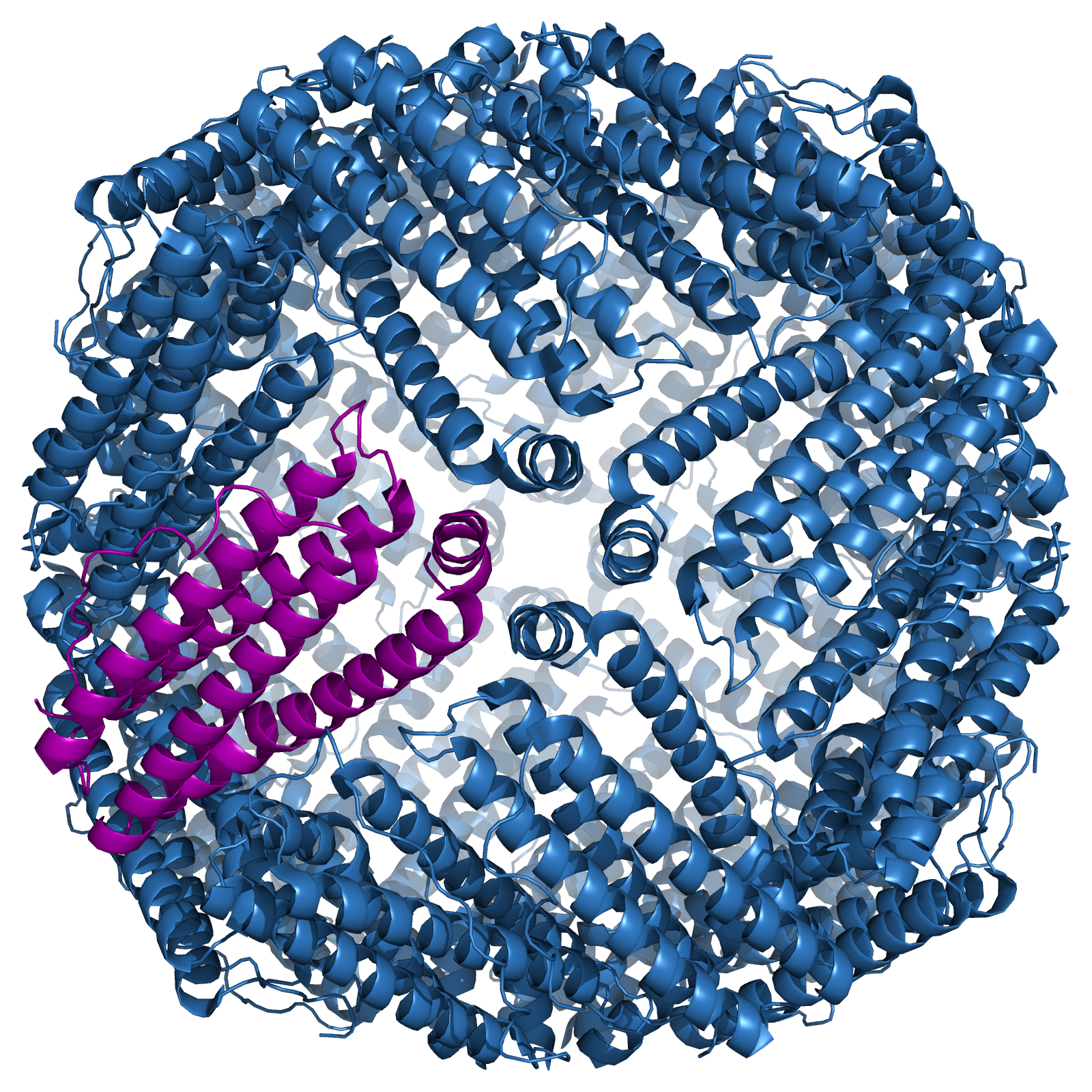
A storage protein called ferritin, which stores iron inside cells. Image: Ferritin.png by Vossman on Wikimedia Commons.
Toxins
Toxins are biological molecules that organisms use to cause harm to other organisms. Many toxins are proteins. For example, plants produce many toxic proteins to prevent animals from eating them.
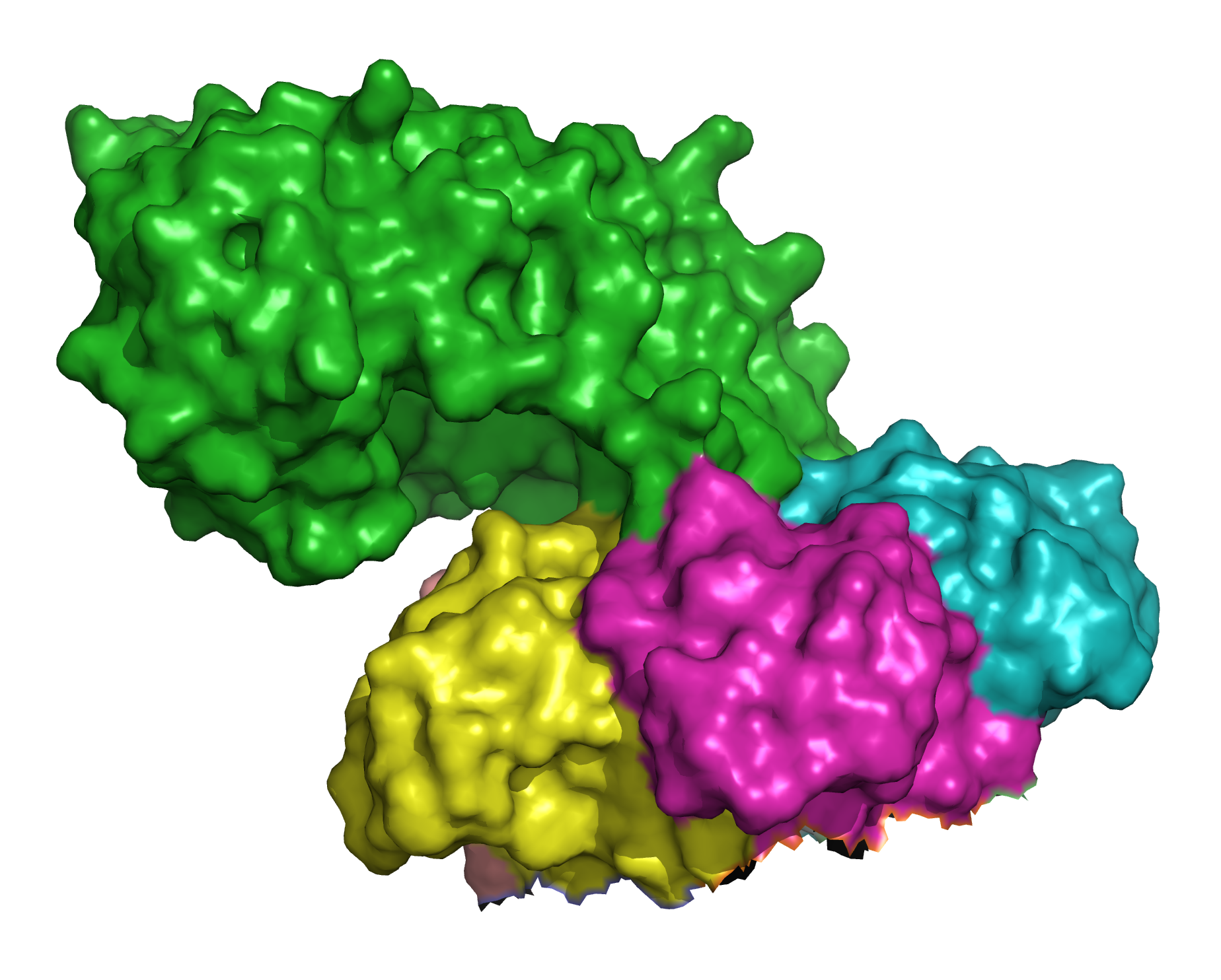
The structure of a toxin which is produced by the bacterium Shigella dysenteriae.
Flashcards
Flashcards help you memorise information quickly. Copy each question onto its own flashcard and then write the answer on the other side. Testing yourself on these regularly will enable you to learn much more quickly than just reading and making notes.
1/2
What are proteins?
2/2
What are proteins made of and how are they made?
Donate
Please consider donating to support Mooramo. I am one person doing this whole project on my own - including building the site, writing the content, creating illustrations and making revision resources. By making a one-time or repeating donation you will buy me time to work on Mooramo, meaning that I can get new content on here more quickly.
Donate